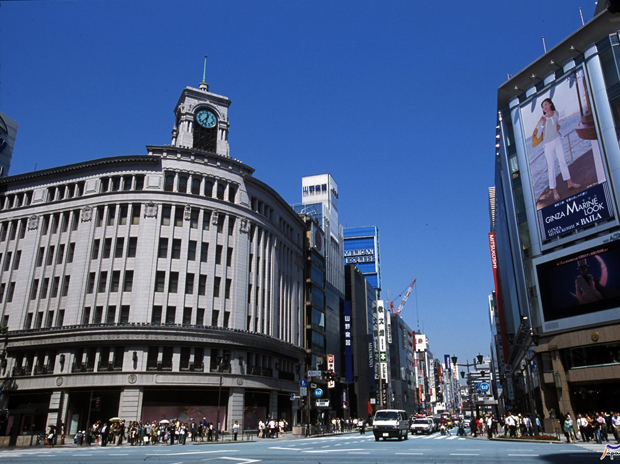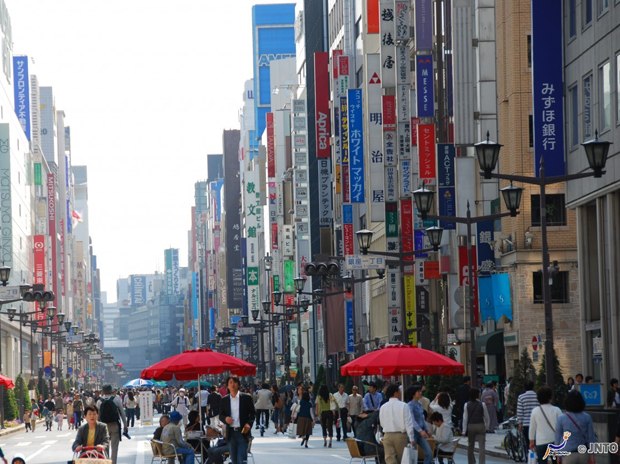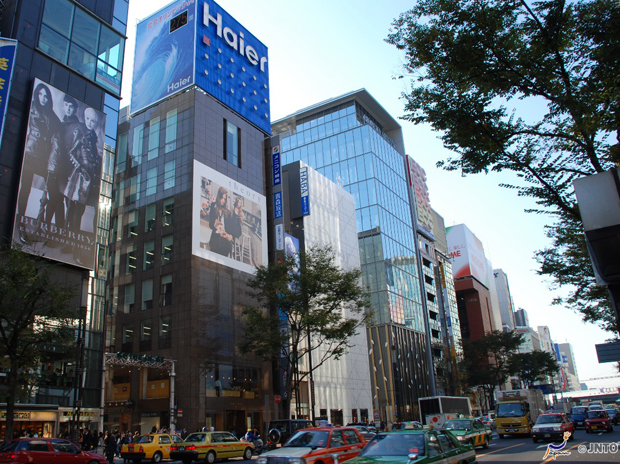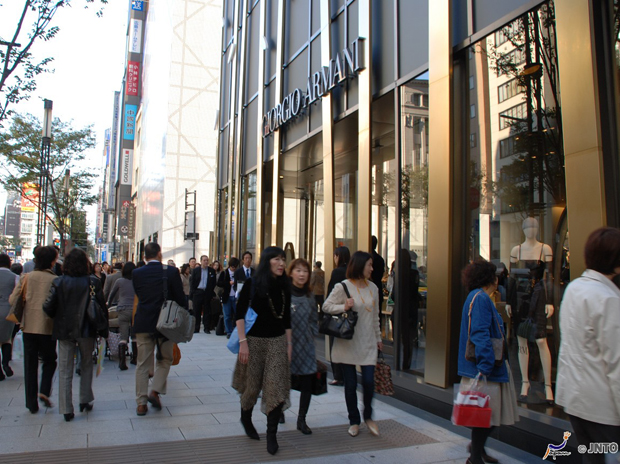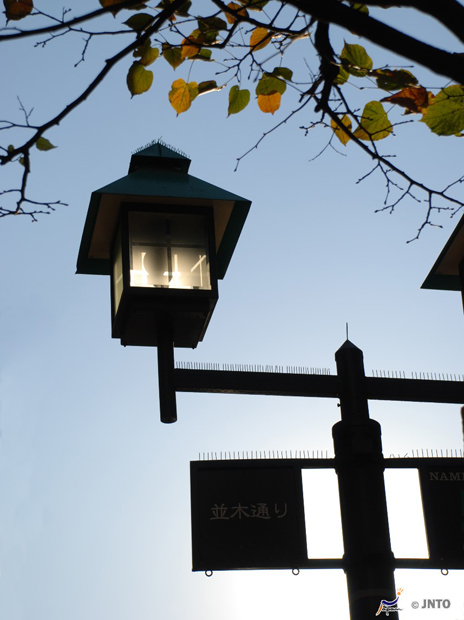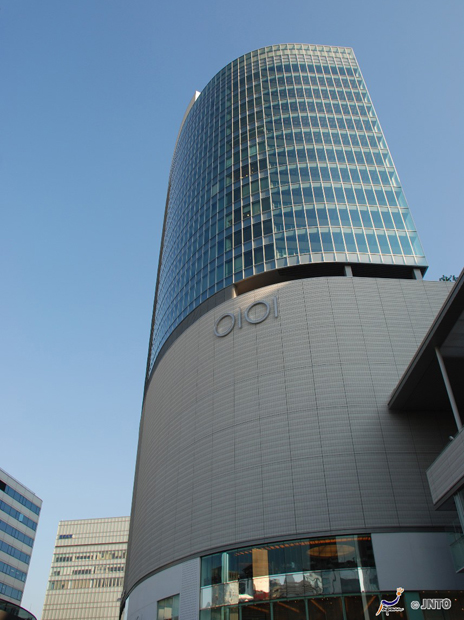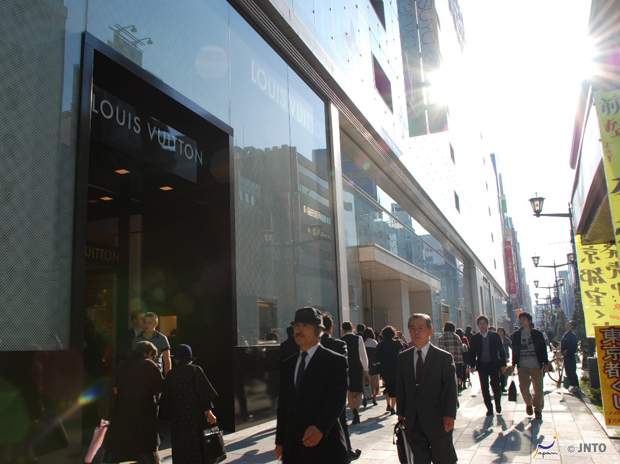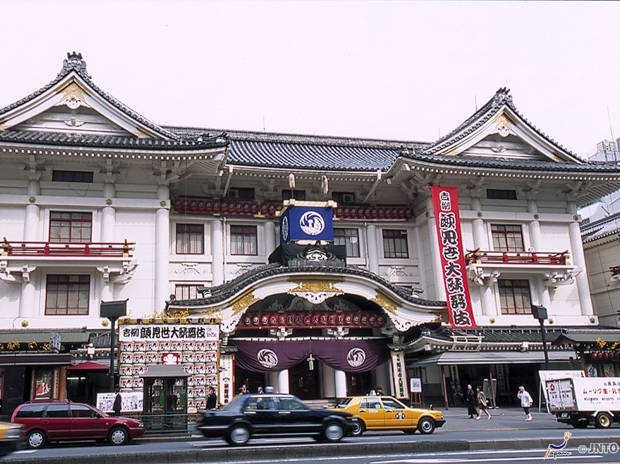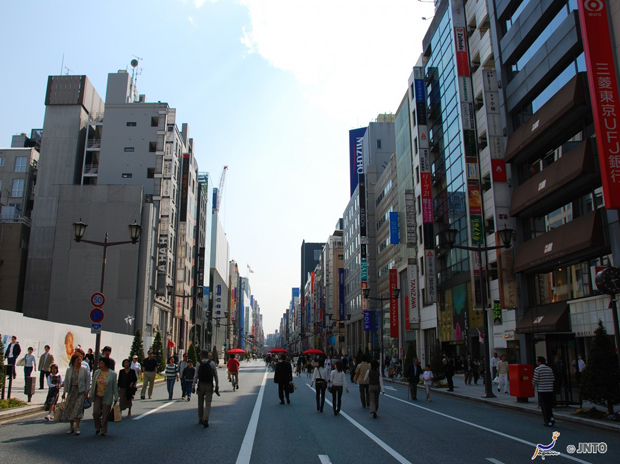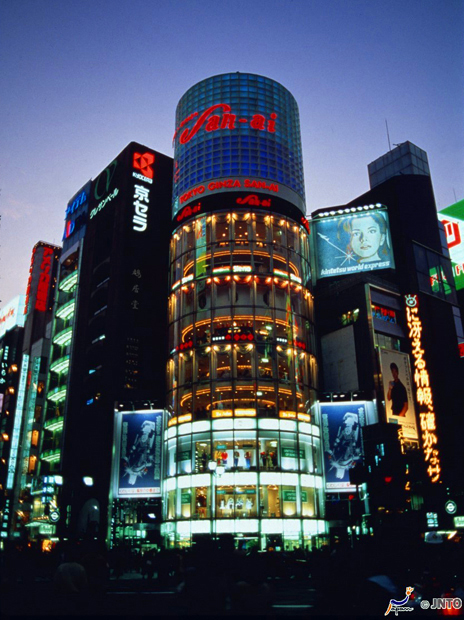
Each coin must be an exact likeness of its peers and, in so doing, contribute to their collective value. Each brick derives its strength from those replicable virtues out of which tall edifices grow. Words are the bricks with which we build meaning and the currency in which we trade that most human of impulses - conversation.
These three concepts - coin, brick and word - are the keys with which we can decode the discourse at work in Ginza District.
Gin is Japanese for silver and za refers to the nobly sponsored trade guilds that held sway in Japan’s complex feudal economy. It was the name given to first the guild that administered the silver monopoly and oversaw the minting of the coins it produced, and then the area of the ancient city of Edo where it was located.
Already a district imbued with the spirit of modernity and luxury, being close to where foreigners had been permitted to live since 1869 and the setting for many samurai and feudal lords’ lavish private residences, Ginza was proclaimed as the future model of Japanese modernisation following the fire which destroyed the area in 1872.
Irish architect Thomas Waters was drafted in to oversee the introduction of brick-made fireproof Georgian buildings and wide promenades, which marked an unprecedented departure from centuries of Japanese urban design. This new bricktown became a byword for “civilisation and enlightenment” - housing what was soon to be renamed Tokyo’s trendsetting newspapers and magazines, and rapidly gaining notoriety for the elaborate window displays that were a feature of the stores in this burgeoning retail district.
This was a pivotal moment in Japanese cultural history. While many of the original bricktown buildings did not survive the pace of development, this spirit of Ginza, promising luxury retail and modern international influences, reigned supreme at the heart of Tokyo. Department stores sprung up to satisfy the ever-increasing demand for imported fashions and luxuries. Famous for its Neo-Renaissance architecture and iconic clock tower, the landmark Wako store, first built by the founding father of the Seiko watch empire on the main thoroughfare Chuo-Dori was one of the heralds of the area’s metamorphosis.
Very soon other prestige Japanese department stores, such as Matsuya, were springing up along Chuo-Dori, also known as Ginza Street, and the expansive lattice of side streets and thoroughfares, such as Harumi-Dori and Namiki-Dori - which is so laden with international chic as to be nicknamed “Brand Street”.
As the Japanese economic miracle has spiralled ever closer to the sun through the Twentieth Century and now into the new Millennium, these exclusive stores have serviced the ever-increasing demands of the ever-increasingly affluent members of the elite. In satisfying this need for couture level clothing, jewellery, and other luxuries, and offering impeccable Japanese service in the boutique environment created by truly world class department stores, Ginza’s exclusivity has begotten yet more exclusivity.
As ever, exclusivity is that elusive quicksilver commodity worth more than diamonds, and today, Ginza is a modern shopper’s paradise - where some of the world’s most exclusive and opulent retail venues are housed on some of the world’s most expensive real estate. Almost every major brand in luxury retail maintains a flagship store or at the very least a significant presence here, willingly paying the exorbitant price for exposure to some of the most exclusive clientele on earth.
Echoing the Meiji government’s radical vision a century earlier, many of fashion’s icons - Chanel, Christian Dior, Gucci, Hermès and Louis Vuitton - have imported their own internationally renowned architects and design teams to construct for them stunning bespoke fashion palaces.
Consistent with Ginza’s tradition of transnational modernity, some of Japan’s largest and most influential corporations and multinationals are based in Ginza, including Sony, whose classic postmodern Sony Building contains a myriad retail opportunities and state of the art showroom, and the paper conglomerate Ricoh.
The area is also a hub for Tokyo nightlife, as the capital’s premier restaurants (like Beige Tokyo by Alain Ducasse, located on the top floor of the Chanel Ginza Building), coffee shops, bars and nightclubs orbit around Ginza’s twin suns of fashion and wealth; this is the place where anyone who is anyone in Tokyo’s elite social circles is looking to be seen.
Despite this incredible sense of border-hopping luxurious modernity, the serene beauty and fierce creative pride of traditional culture still flickers and lingers around every corner. There are no less than four major theatres in the area, including the iconic and currently under renovation Kabuki-za Theatre, which showcase the full array of high Japanese cultural expression performed to the most exacting standards of the local aficionados that still frequent them.
Born of the triumph of human innovation, the word Ginza acts as a gateway to Japan’s historical negotiation with the tropes and notions of modernity that far flung cultures have brought to its shores. It sums up the delicate and precise harmony between style and tradition that this land of ornate equilibrium has navigated for centuries.
With iconic names such as Chanel, Van Cleef & Arpels, Prada, Dunhill, Cartier, Valentino, Christian Dior, Bulgari, Hermès, Mikimoto, Gucci, Burberry, Mont Blanc, Louis Vuitton, Tiffany & Co., Armani, Sonia Rykiel, Loewe, Furla and Lanvin uttered as naturally as the dialogue from the Kubuki extravaganza playing across the street, the modern universality of words is found in the name of priceless luxury still minted on every square foot and brick of Ginza - Tokyo’s stylish heart.
- Benjamin Stewart
Ginza -
Address: Chuo-ku
Tokyo, 104-0061
Tel: 03 3542 1581
Website: www.ginza.jp
ginzastreet.jp
Photo Credit: © Japan National Tourism Organization
www.jnto.go.jp
www.japantravelinfo.com
These three concepts - coin, brick and word - are the keys with which we can decode the discourse at work in Ginza District.
Gin is Japanese for silver and za refers to the nobly sponsored trade guilds that held sway in Japan’s complex feudal economy. It was the name given to first the guild that administered the silver monopoly and oversaw the minting of the coins it produced, and then the area of the ancient city of Edo where it was located.
Already a district imbued with the spirit of modernity and luxury, being close to where foreigners had been permitted to live since 1869 and the setting for many samurai and feudal lords’ lavish private residences, Ginza was proclaimed as the future model of Japanese modernisation following the fire which destroyed the area in 1872.
Irish architect Thomas Waters was drafted in to oversee the introduction of brick-made fireproof Georgian buildings and wide promenades, which marked an unprecedented departure from centuries of Japanese urban design. This new bricktown became a byword for “civilisation and enlightenment” - housing what was soon to be renamed Tokyo’s trendsetting newspapers and magazines, and rapidly gaining notoriety for the elaborate window displays that were a feature of the stores in this burgeoning retail district.
This was a pivotal moment in Japanese cultural history. While many of the original bricktown buildings did not survive the pace of development, this spirit of Ginza, promising luxury retail and modern international influences, reigned supreme at the heart of Tokyo. Department stores sprung up to satisfy the ever-increasing demand for imported fashions and luxuries. Famous for its Neo-Renaissance architecture and iconic clock tower, the landmark Wako store, first built by the founding father of the Seiko watch empire on the main thoroughfare Chuo-Dori was one of the heralds of the area’s metamorphosis.
Very soon other prestige Japanese department stores, such as Matsuya, were springing up along Chuo-Dori, also known as Ginza Street, and the expansive lattice of side streets and thoroughfares, such as Harumi-Dori and Namiki-Dori - which is so laden with international chic as to be nicknamed “Brand Street”.
As the Japanese economic miracle has spiralled ever closer to the sun through the Twentieth Century and now into the new Millennium, these exclusive stores have serviced the ever-increasing demands of the ever-increasingly affluent members of the elite. In satisfying this need for couture level clothing, jewellery, and other luxuries, and offering impeccable Japanese service in the boutique environment created by truly world class department stores, Ginza’s exclusivity has begotten yet more exclusivity.
As ever, exclusivity is that elusive quicksilver commodity worth more than diamonds, and today, Ginza is a modern shopper’s paradise - where some of the world’s most exclusive and opulent retail venues are housed on some of the world’s most expensive real estate. Almost every major brand in luxury retail maintains a flagship store or at the very least a significant presence here, willingly paying the exorbitant price for exposure to some of the most exclusive clientele on earth.
Echoing the Meiji government’s radical vision a century earlier, many of fashion’s icons - Chanel, Christian Dior, Gucci, Hermès and Louis Vuitton - have imported their own internationally renowned architects and design teams to construct for them stunning bespoke fashion palaces.
Consistent with Ginza’s tradition of transnational modernity, some of Japan’s largest and most influential corporations and multinationals are based in Ginza, including Sony, whose classic postmodern Sony Building contains a myriad retail opportunities and state of the art showroom, and the paper conglomerate Ricoh.
The area is also a hub for Tokyo nightlife, as the capital’s premier restaurants (like Beige Tokyo by Alain Ducasse, located on the top floor of the Chanel Ginza Building), coffee shops, bars and nightclubs orbit around Ginza’s twin suns of fashion and wealth; this is the place where anyone who is anyone in Tokyo’s elite social circles is looking to be seen.
Despite this incredible sense of border-hopping luxurious modernity, the serene beauty and fierce creative pride of traditional culture still flickers and lingers around every corner. There are no less than four major theatres in the area, including the iconic and currently under renovation Kabuki-za Theatre, which showcase the full array of high Japanese cultural expression performed to the most exacting standards of the local aficionados that still frequent them.
Born of the triumph of human innovation, the word Ginza acts as a gateway to Japan’s historical negotiation with the tropes and notions of modernity that far flung cultures have brought to its shores. It sums up the delicate and precise harmony between style and tradition that this land of ornate equilibrium has navigated for centuries.
With iconic names such as Chanel, Van Cleef & Arpels, Prada, Dunhill, Cartier, Valentino, Christian Dior, Bulgari, Hermès, Mikimoto, Gucci, Burberry, Mont Blanc, Louis Vuitton, Tiffany & Co., Armani, Sonia Rykiel, Loewe, Furla and Lanvin uttered as naturally as the dialogue from the Kubuki extravaganza playing across the street, the modern universality of words is found in the name of priceless luxury still minted on every square foot and brick of Ginza - Tokyo’s stylish heart.
- Benjamin Stewart
Ginza -
Address: Chuo-ku
Tokyo, 104-0061
Tel: 03 3542 1581
Website: www.ginza.jp
ginzastreet.jp
Photo Credit: © Japan National Tourism Organization
www.jnto.go.jp
www.japantravelinfo.com
Ginza -






